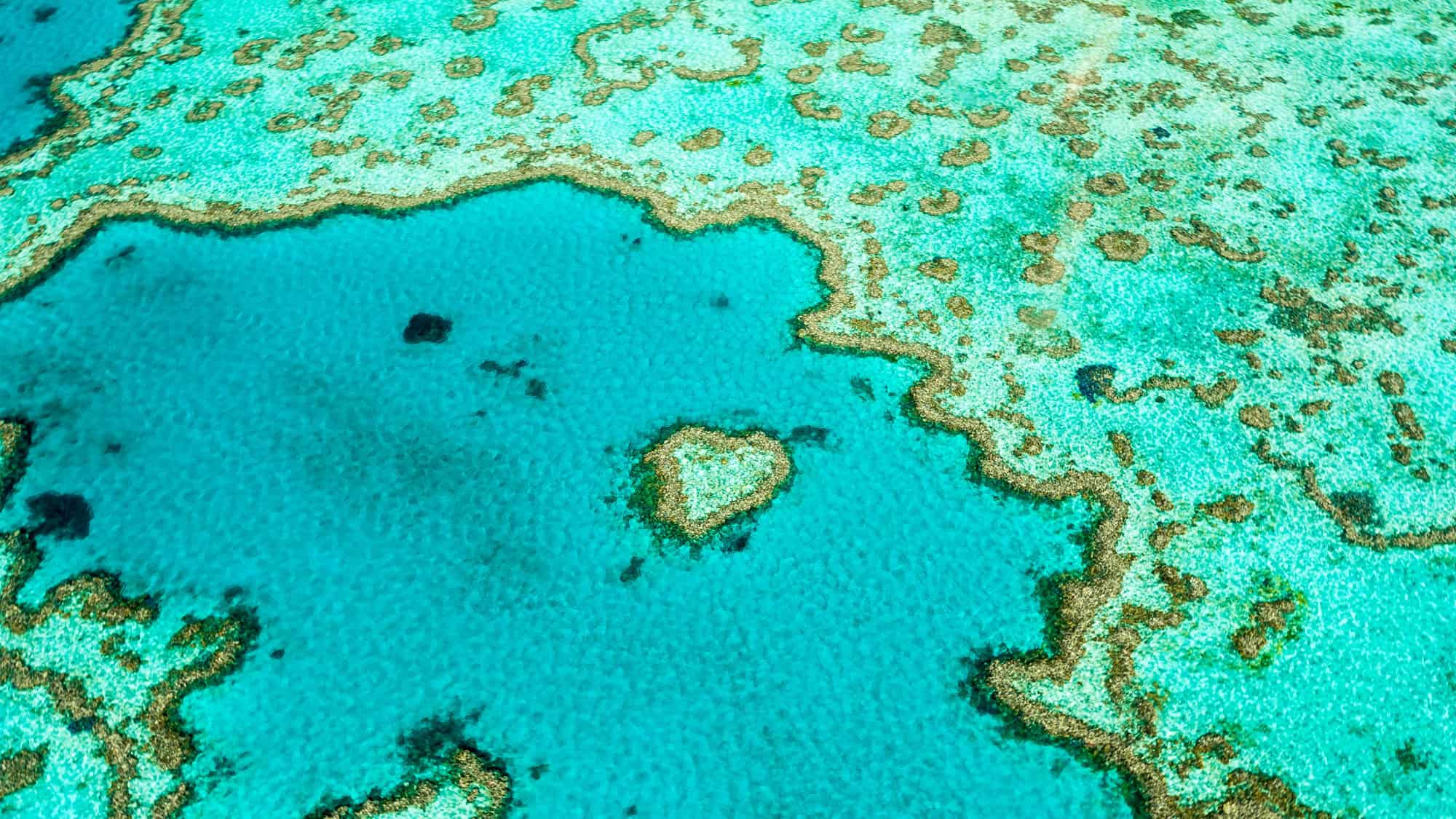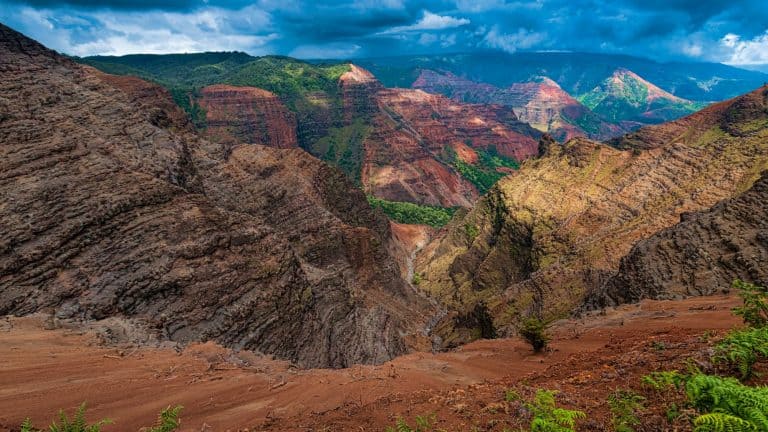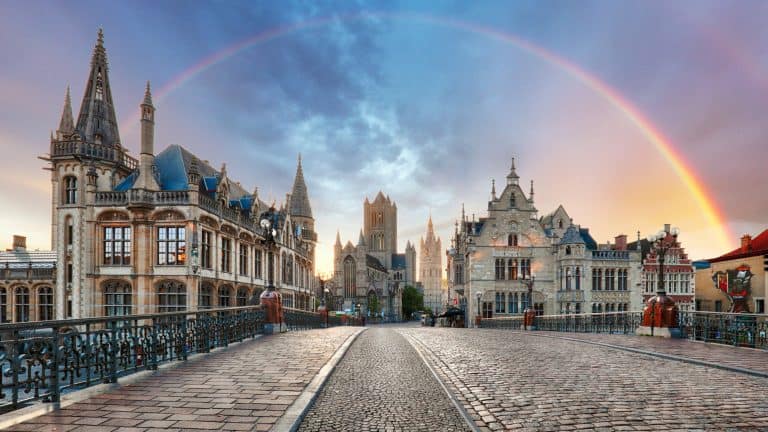Discover Parks & Wildlife contains affiliate links and is a member of the Amazon Services LLC Associates Program. If you make a purchase using one of the Amazon links, we may receive compensation at no extra cost to you. We may also use select AI tools to support our creative process, but all content is reviewed, refined, and finalized by our human team. See our disclosure policy and our AI use policy for more information.
15 Of The Earth’s Most Colorful Natural Landscapes That Will Leave You Awestruck
Across continents, nature paints in colors that feel almost impossible: pinks that shimmer at noon, greens that seem lit from within, and blues so deep they pull your eyes toward them. But these landscapes don’t just impress; they remind us that Earth remains an artist unmatched by any hand.
Each place holds its own rhythm, shaped by geology, climate, and time, and the best moments often come when the light shifts, bringing an entirely new hue to the surface. The air feels different too: thin, warm, or heavy with minerals. But what ties these places together is the simple truth that color changes how we feel.
Standing before them, silence becomes natural, conversation slows, and the sheer scale of it all takes over. So whether you’re drawn to icy tones or desert reds, these natural wonders prove that Earth’s imagination stretches far beyond what we expect.
Zhangye Danxia, China

In the northern reaches of Gansu Province, Zhangye Danxia unfolds like a watercolor stretched across the desert. Layers of sandstone and minerals, pressed and lifted over 20 million years, have created ridges of red and gold that ripple to the horizon.
The colors shift constantly with the light, deepening to copper tones at sunset and softening under the morning haze. And wooden paths weave through the hills, guiding you across fragile terrain that looks almost unreal. Summer days often rise above 85°F, so early or late visits make for gentler air and fewer crowds.
The nearest city, Zhangye, lies just 25 miles away, offering small inns and markets filled with Gansu’s hearty noodles and mountain honey.
Standing before these striped hills, you sense both time and heat compressed into something permanent, a reminder that nature doesn’t rush its masterpieces; it builds them one layer at a time.
Grand Prismatic Spring, Wyoming (Yellowstone NP)

At the heart of Yellowstone National Park lies Grand Prismatic Spring, a living spectrum that radiates color through steam. Measuring more than 300 feet wide, it’s the largest hot spring in the country and among the most vibrant anywhere on Earth.
The center glows deep turquoise from pure, boiling water, while rings of green, yellow, and fiery orange mark the presence of heat-loving microorganisms that thrive only at certain temperatures. The air smells faintly of sulfur, and mist dances across the surface like smoke over a painting.
You can follow the boardwalk close enough to feel the warmth rising through your shoes, though the overlook on the Fairy Falls trail offers the full effect: an aerial burst of color framed by pine forest. Midday sun brings the sharpest hues, while early mornings offer quiet and fewer footsteps.
Lake Hillier, Australia

Hidden off the southern coast of Western Australia, Lake Hillier glows an improbable shade of pink that never fades. Its vivid color (likely due to salt-loving algae and bacteria reacting to high salinity) remains unchanged even after bottling.
Only a narrow strip of white sand and eucalyptus forest separates it from the deep blue of the Southern Ocean, creating a contrast so striking it feels painted by hand. Because Middle Island is part of a protected reserve, most people see the lake from the air on scenic flights, though research expeditions occasionally reach its shores.
From above, the water appears opaque and silky, shifting from rose to coral depending on the sun’s angle. During calm weather, reflections vanish and the color seems to glow from within. Lake Hillier isn’t large, just over 2,000 feet long, but its hue defies belief, reminding you that science and wonder often meet in the same moment.
Antelope Canyon, Arizona

Carved through soft Navajo sandstone near Page, Antelope Canyon is a sculpted world of curves, shadows, and glowing light. Narrow passageways twist like ribbons, their walls rippling in tones of orange, red, and deep violet.
Centuries of flash floods have smoothed the rock into shapes so fluid they appear carved by wind rather than water. And around midday, when sunlight drops through the narrow openings above, the canyon fills with bright columns of gold dust that seem to suspend time. The air is cool and still, echoing faintly when voices drift through.
Guided tours, required by Navajo Nation regulations, lead you safely through its maze while sharing the canyon’s stories and significance.
Outside, desert heat can soar past 95°F, but inside the stone passage, the temperature stays comfortable and the world feels hushed.
Cano Cristales, Colombia

Deep in Colombia’s Serrania de la Macarena lies Cano Cristales, a river so brilliant it’s called “The Liquid Rainbow.” From June to November, aquatic plants known as macarenia clavigera turn vivid shades of red, fuchsia, and purple beneath crystal-clear water. Combined with the river’s golden sand and green moss, the result looks like molten light flowing through jungle rock.
To reach it, travelers fly to La Macarena and hike through humid forest, crossing shallow streams that sparkle in the sun. And the best time to see the colors is during the dry-to-wet transition, when sunlight filters through the canopy and water levels sit just right. The surrounding area buzzes with birdcalls and the scent of damp earth.
Standing by its banks, you realize the spectacle lasts only a few months each year, a natural performance sustained by fragile balance. But for those who make the trip, it’s pure magic written in water.
Pamukkale, Turkey

In southwestern Turkey, Pamukkale’s white terraces cascade down the hillside like sheets of frozen silk. Created by calcium-rich thermal springs over millennia, these travertine pools shimmer blue and white under the sun, earning the name “cotton castle.”
Warm mineral water continues to flow, replenishing each terrace and keeping the surface smooth and bright. And visitors can walk barefoot through shallow sections, feeling soft mineral deposits underfoot while gazing over the valley below.
Just above lies the ancient city of Hierapolis, where Romans once bathed in the same healing waters.
Temperatures often hover near 80°F in spring and fall, and the late afternoon light colors the terraces in gentle peach tones. From above, the pools resemble a cascading glacier melting into the plains.
Salar de Uyuni, Bolivia

High on Bolivia’s Altiplano, Salar de Uyuni stretches across more than 4,000 square miles, forming the world’s largest salt flat. During the rainy season, a thin film of water transforms the desert into a flawless mirror, reflecting the sky and blurring the line between earth and heaven.
In the dry months, the ground cracks into perfect hexagons, each one edged in blinding white crystal. Be aware that the air is thin (you are over 11,000 feet above sea level), so make sure you are prepared and take precautions.
Dawn brings pastel light that slowly ignites the surface, while sunset showers it in pink and gold. At night, stars double in the mirrored ground, making it one of the best stargazing sites on Earth. And small villages at the edge offer salt-brick hotels and warm llama stew.
Mount Roraima, Venezuela & Brazil

Mount Roraima rises abruptly from the rainforest, its flat summit perched nearly 9,000 feet above sea level where the borders of Venezuela, Brazil, and Guyana meet. Its sheer cliffs and isolated plateau have inspired tales of lost worlds and hidden species.
Clouds often drape the summit, parting briefly to reveal a stark landscape of stone, moss, and quartz reflecting scattered sunlight. The mountain’s unique shape comes from erosion that separated it from surrounding peaks over millions of years.
Reaching the top requires a multi-day trek through the jungle and steep ascents, but the view is worth every step. Once there, you’ll find shallow pools that catch rainwater and tiny plants found nowhere else in the world. And the mist thickens and clears in cycles, giving the impression that the mountain breathes.
Few places combine such mystery, beauty, and solitude; Roraima feels like standing on the roof of an ancient planet, untouched and eternal.
Valley of Flowers, India

Tucked high in India’s Uttarakhand Himalayas, the Valley of Flowers unfurls each summer in a carpet of wild color. Between July and September, meadows fill with blue poppies, primulas, and hundreds of other alpine blooms framed by snow-capped peaks.
The air, thin at over 11,000 feet, carries the scent of damp soil and herbs. And trails wind gently through waterfalls and ridges where clouds drift low enough to touch. Part of a UNESCO World Heritage Site, the valley remains protected, with overnight stays restricted nearby to preserve its delicate ecosystem.
Early mornings are ethereal, as sunlight filters through mist and every petal glistens with dew. Afternoon storms often roll in quickly, adding a chill to the mountain breeze.
The valley’s beauty lies in its fleeting nature, just a few weeks each year when color overtakes rock and grass, reminding you that even in remote heights, life insists on brilliance.
Painted Hills, Oregon

In Oregon’s high desert, the Painted Hills rise in rolling bands of rust, amber, and black that seem almost too vivid to be real. Each layer records a different epoch: volcanic ash, ancient soils, and shifting climates preserved as color.
After rain, the hues deepen into wet clay reds; on dry days, they fade to pale gold. Walking the short trails here feels like moving through a painting, with every angle revealing new lines and shadows. The area belongs to the John Day Fossil Beds National Monument, where scientists continue to uncover evidence of ancient ecosystems.
Silence dominates, broken only by the occasional gust or distant hawk cry. And sunsets bring the most dramatic views, when the slanting light burns across the ridges and turns them molten.
Great Barrier Reef, Australia

Stretching more than 1,400 miles along Australia’s northeast coast, the Great Barrier Reef remains the planet’s largest living structure and its most colorful underwater world. Beneath the waves, coral gardens bloom in blues, purples, and golds, sheltering thousands of species from sea turtles to butterflyfish.
The reef’s vibrancy comes from its delicate partnership between coral and algae, a relationship now tested by rising sea temperatures. Yet vast sections still thrive, revealing the ocean’s full brilliance.
The surface above shimmers turquoise, while deeper waters fade to cobalt. From the deck of a small boat, the reef seems endless, alive with motion and color. And snorkelers drift above coral bommies near Cairns or the Whitsundays, where sunlight filters through the water in shifting beams.
Dallol, Ethiopia

In Ethiopia’s Danakil Depression, Dallol is a landscape of extremes. It sits nearly 400 feet below sea level and regularly reaches 110°F, yet the heat births astonishing color. Pools of acid shimmer in neon yellows, greens, and oranges, created by volcanic gases reacting with minerals in the crust.
Salt chimneys rise from the ground like coral turned to stone, and vents hiss continuously, painting the air with sulfur. And the terrain changes almost daily as deposits harden and crack, creating new patterns of color and shape.
Guided expeditions enter carefully, often early morning when temperatures are marginally cooler.
Despite its harshness, Dallol feels mesmerizing, alive with energy that seems more cosmic than earthly. Standing amid the heat and steam, you realize you’re witnessing the planet’s raw power, color born not from calm, but from creation itself.
Moraine Lake, Canada

Situated within Alberta’s Valley of the Ten Peaks, Moraine Lake glows with an almost electric blue. The color comes from glacial rock flour suspended in meltwater, scattering sunlight in turquoise tones that shift throughout the day.
Encircled by jagged peaks and dense forest, the lake sits at about 6,100 feet, where mornings are crisp even in midsummer. The best time to visit is early, before the road closes to manage crowds, when the water is still and reflections double the surrounding peaks.
Short trails lead to viewpoints overlooking the entire basin, and the air smells of pine and cold stone. In late afternoon, the blue deepens toward indigo, mirroring shadows from the mountains. But no matter what angle or time of day you see it, every view feels balanced: sky, rock, and water locked in quiet symmetry.
Just know that Moraine Lake’s calm is deceptive; beneath that perfect surface lies a glacier-fed pulse that keeps its color alive year after year.
Provence Lavender Fields, France

Each summer, Provence turns violet as endless rows of lavender blanket the hills. Around Valensole, Sault, and Gordes, the fields bloom from late June to mid-July, filling the air with a perfume so rich it feels almost tangible.
Warm breezes carry the hum of bees, and every direction reveals waves of color rolling toward the horizon. Early morning brings the softest light, while late evening shows gold over purple, turning the landscape into something timeless.
Farmers still harvest by hand in many places, stacking bunches to dry under stone barns. And roads wind gently through the countryside, past small villages where cafes serve lavender-infused honey and cool glasses of rosé.
The rhythm here feels unhurried, rooted in soil and season. Standing among the blooms, you realize color isn’t only seen, it’s also felt in the air, in the hum of life around you, and in the peace that settles without words.
Wai-O-Tapu Thermal Wonderland, New Zealand

On New Zealand’s North Island, Wai-O-Tapu seethes and glows with geothermal color. The star attraction, Champagne Pool, fizzes orange and lime-green from minerals rising through hot water, while nearby mud pots bubble in shades of gray and cream.
Boardwalks wind safely through the field, leading past craters, terraces, and small geysers that hiss without warning. Steam curls around your legs as the sulfur scent thickens in the warm air. And each pool tells a story in minerals (arsenic yellows, antimony reds, copper greens) coloring the landscape like molten metal.
Morning is the most dramatic time to visit, when cool air meets the heat below, wrapping the pools in mist. In a single glance, you witness fire and water working together, shaping color straight from the planet’s core.
Like Our Content? Follow Us on MSN (or click the Follow Button above) for more from Discover Parks & Wildlife.
12 Public Lands of America You’ll Regret Visiting Without Mosquito Deterrent

Trust me, you don’t want to tackle these mosquito-infested wilderness spots without some serious bug-blocking power. Don’t say I didn’t warn you.
12 State Parks That Offer An Unexpected Alternative To The Everglades

Bet you didn’t expect that these state parks could give the Everglades a run for their money. Time to rethink your travel plans.
13 Cliffs Too Stunning To Skip

Missing out on jaw-dropping views is basically a crime, and these cliffs are here to bail you out. Trust me, you’ll want these stunning spots on your radar before your next adventure.






